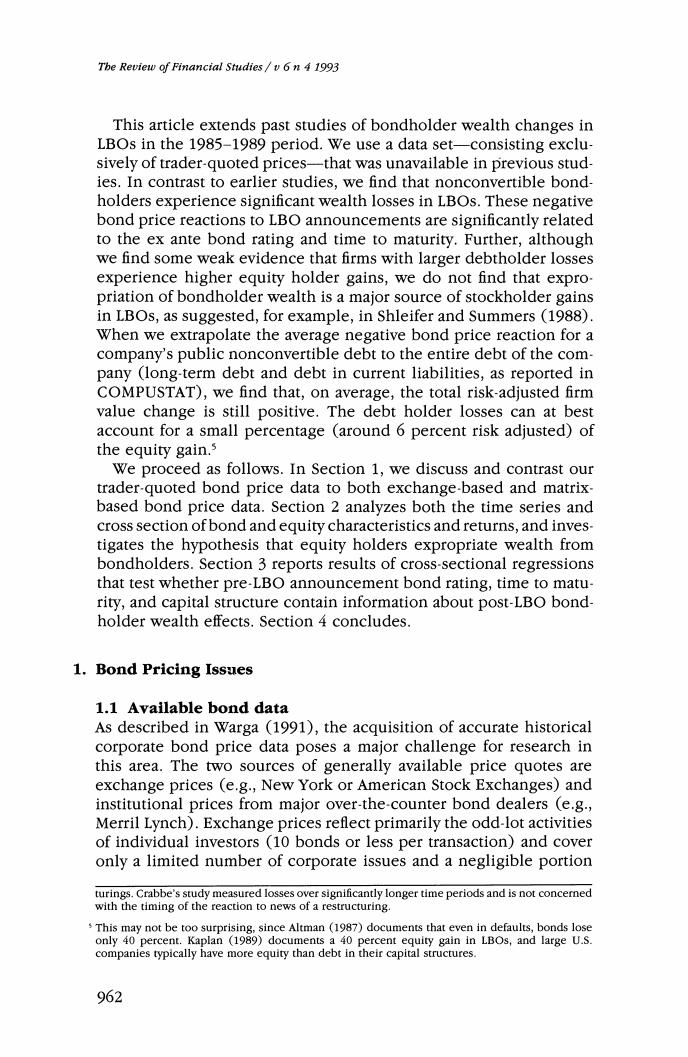正在加载图片...

The Review of Financial Studies /v 6n 4 1993 This article extends past studies of bondholder wealth changes in LBOs in the 1985-1989 period.We use a data set-consisting exclu- sively of trader-quoted prices-that was unavailable in previous stud- ies.In contrast to earlier studies,we find that nonconvertible bond- holders experience significant wealth losses in LBOs.These negative bond price reactions to LBO announcements are significantly related to the ex ante bond rating and time to maturity.Further,although we find some weak evidence that firms with larger debtholder losses experience higher equity holder gains,we do not find that expro- priation of bondholder wealth is a major source of stockholder gains in LBOs,as suggested,for example,in Shleifer and Summers (1988). When we extrapolate the average negative bond price reaction for a company's public nonconvertible debt to the entire debt of the com- pany (long-term debt and debt in current liabilities,as reported in COMPUSTAT),we find that,on average,the total risk-adjusted firm value change is still positive.The debt holder losses can at best account for a small percentage (around 6 percent risk adjusted)of the equity gain.3 We proceed as follows.In Section 1,we discuss and contrast our trader-quoted bond price data to both exchange-based and matrix- based bond price data.Section 2 analyzes both the time series and cross section of bond and equity characteristics and returns,and inves- tigates the hypothesis that equity holders expropriate wealth from bondholders.Section 3 reports results of cross-sectional regressions that test whether pre-LBO announcement bond rating,time to matu- rity,and capital structure contain information about post-LBO bond- holder wealth effects.Section 4 concludes. 1.Bond Pricing Issues 1.1 Available bond data As described in Warga (1991),the acquisition of accurate historical corporate bond price data poses a major challenge for research in this area.The two sources of generally available price quotes are exchange prices (e.g.,New York or American Stock Exchanges)and institutional prices from major over-the-counter bond dealers (e.g., Merril Lynch).Exchange prices reflect primarily the odd-lot activities of individual investors (10 bonds or less per transaction)and cover only a limited number of corporate issues and a negligible portion turings.Crabbe's study measured losses over significantly longer time periods and is not concerned with the timing of the reaction to news of a restructuring. This may not be too surprising,since Altman (1987)documents that even in defaults,bonds lose only 40 percent.Kaplan (1989)documents a 40 percent equity gain in LBOs,and large U.S. companies typically have more equity than debt in their capital structures. 962